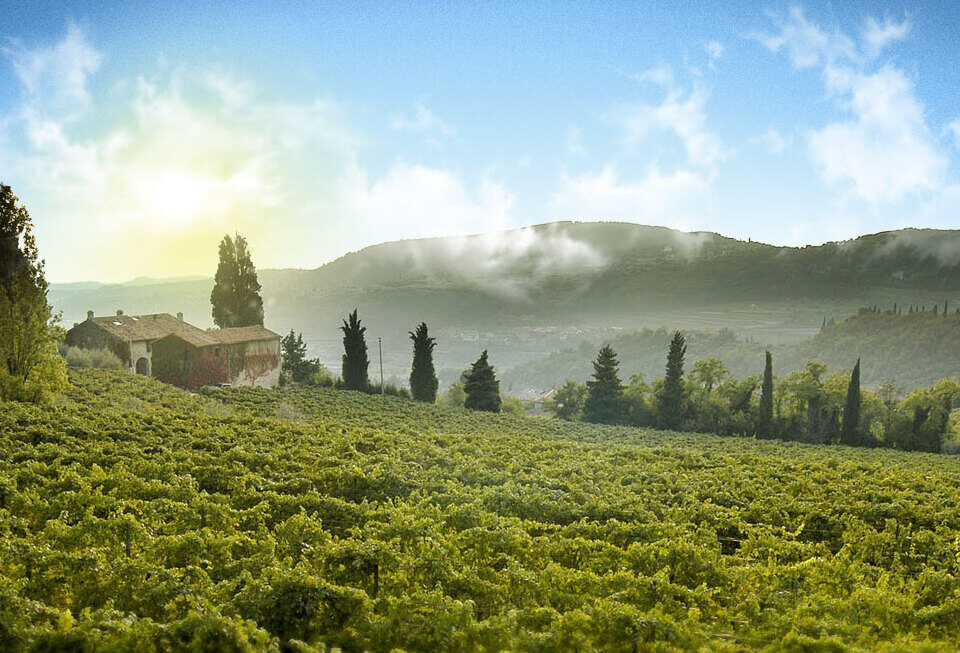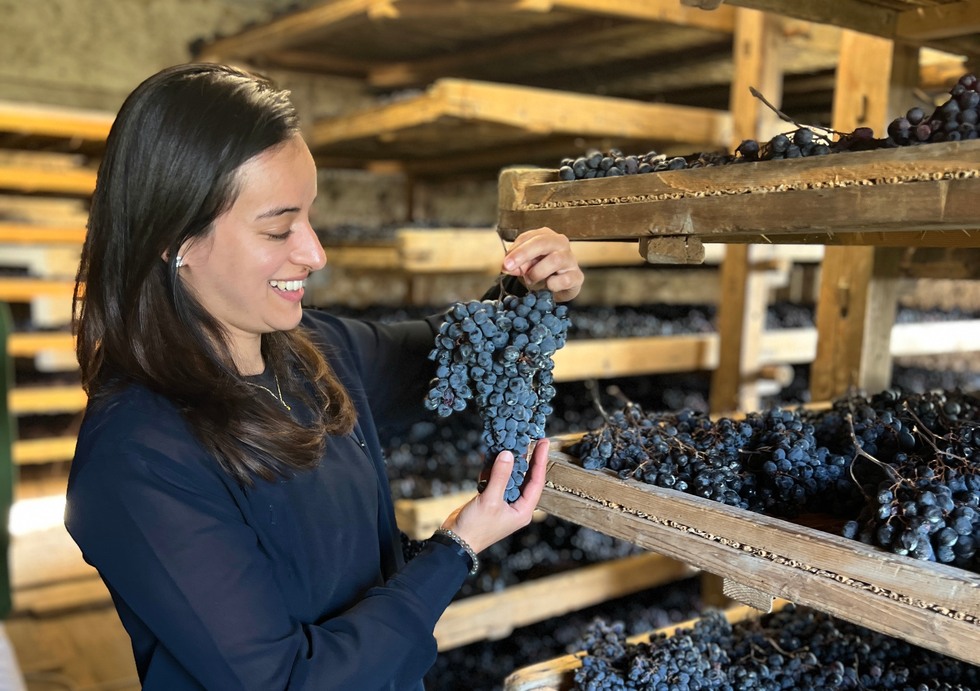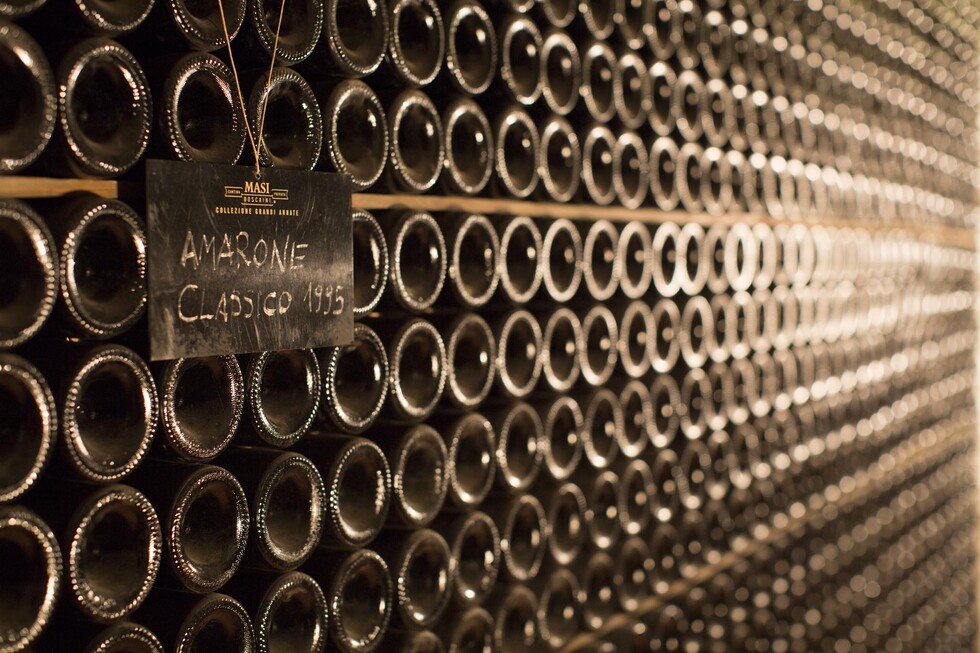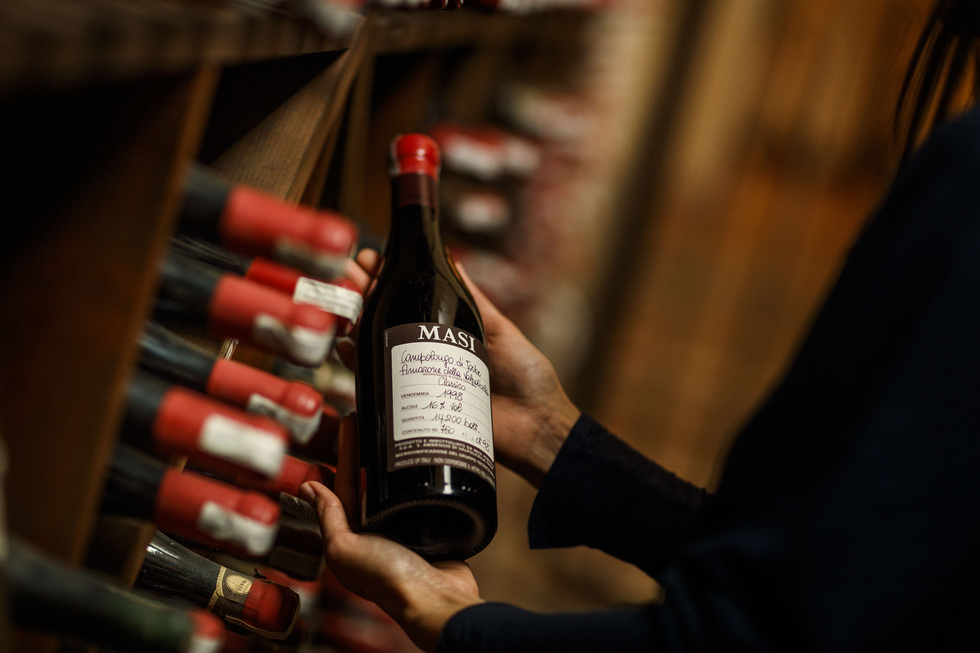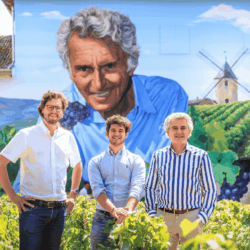In the heart of Italy’s Veneto region, nestled between the historic city of Verona and the picturesque shores of Lake Garda, lies the renowned Masi Winery. With a rich heritage spanning generations, Masi has become synonymous with the exceptional wines of the Valpolicella appellation, captivating wine enthusiasts around the world.
Sommelier Edit took three Future Sommelier competition winners to visit the estate, to taste the wines and learn more about the winemaking in this region and in particular the unique production of Amorone wines, pioneered by Masi family estates.
The Masi story begins with the Boscaini family, whose passion for winemaking has been passed down through the decades. As we step into the winery, we are greeted by the charismatic Giacomo Boscaini, who proudly shares his family’s journey and the intricate details that make Masi’s wines so unique.
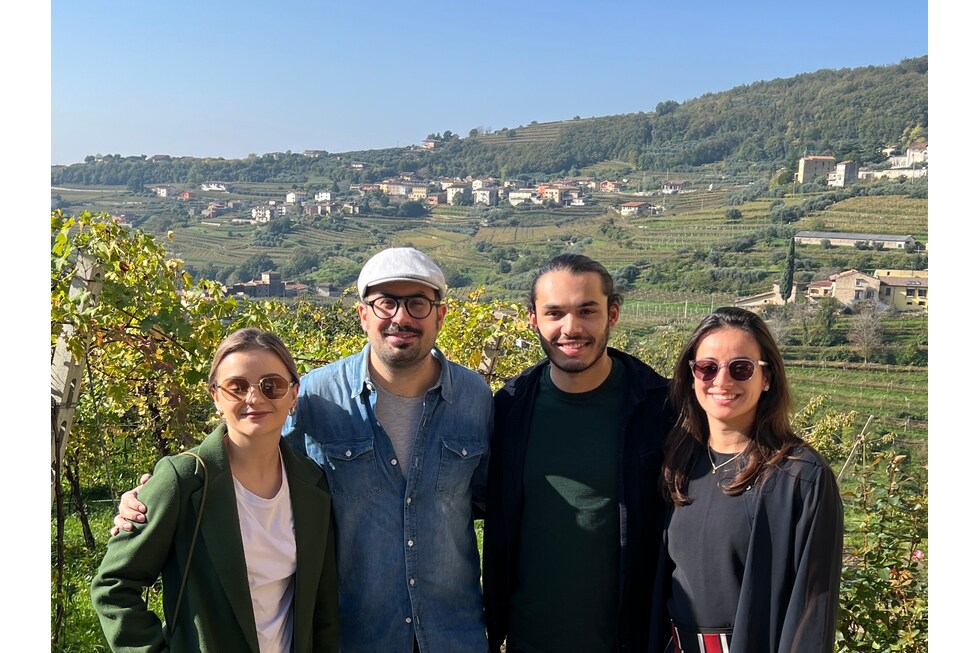
“Our story is not just about the wine, but about the land, the people, and the culture that shape it,” Boscaini explains, visibly sparkling with enthusiasm. “We are not just producers; we are custodians of a rich tradition that has been carefully cultivated over the years.”
Masi’s reach extends far beyond Veneto, with properties scattered across Italy and since 2015 to the stunning Masi Tupungato, a 120-hectare vineyard in Argentina’s Uco Valley. But it is the historic estates in the Valpolicella region where the Masi family has made its name. At the heart of Masi’s operations lies the headquarters in Santa Ambrogio, a picturesque village nestled between Verona and the shores of Lake Garda. Here, the Boscaini family, including Giacomo, his sister, and their cousins, oversee the day-to-day operations, ensuring that the Masi legacy continues to thrive.
“Geography is everything for us,” Boscaini emphasises, as he guides us through the intricate tapestry of Valpolicella’s appellations. “The differences in soil, microclimate, and elevation all play a crucial role in shaping the character of our wines.”
Valpolicella Classico, the epicentre of Masi’s operations, is a region defined by its unique geography. Situated between the city of Verona and the serene waters of Lake Garda, this area benefits from the moderating influence of the lake, creating a microclimate that is ideal for the cultivation of the region’s signature grape varieties: Corvina, Rondinella, Molinara and Oseleta.

“Corvina is the queen of our grapes,” Boscaini explains, as he carefully examines the dried clusters and encourages is to touch, taste and smell the grapes. “It’s oval-shaped berries, combined with the spiciness of Rondinella and the freshness of Oseleta, create the foundation for our renowned Amarone wines.”
The drying process, known as “appassimento,” is a crucial step in the Masi winemaking journey. Using state-of-the-art technology, the winery carefully controls the temperature, humidity, and airflow to ensure a slow and gradual drying of the grapes. This process, which can take up to four months, concentrates the sugars and flavours, resulting in the rich, complex character that defines Amarone.
“We’ve developed a computer system that we call ‘NASA’ – Natural Appassimiento, Super Assisted,” Boscaini reveals, a broad and proud smile spreading across his face. “It allows us to mimic the perfect conditions for natural appassimento, ensuring that we can maintain the highest quality standards even in challenging vintages.”
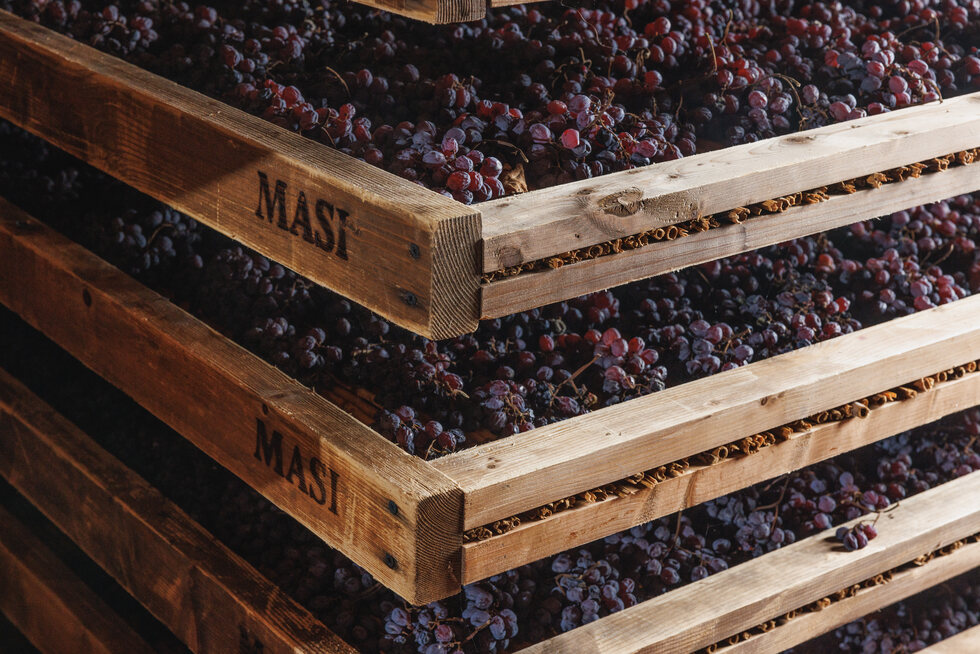
MASI heritage
As we delve deeper into the winery, the true scope of Masi’s operations becomes evident. From the towering wooden barrels used for aging to the experimental spaces dedicated to testing new grape varieties and winemaking techniques, every corner of the facility reflects the family’s unwavering commitment to innovation and tradition.
“We may be a large operation, but we’re not just a famous winemaker,” Boscaini explains. “We’re a team of passionate individuals, each with their own expertise, who come together to make decisions about our wines.”
This collaborative approach is a hallmark of the Masi philosophy. Rather than relying on a single winemaker, the Boscaini family has assembled a group of experts, including agronomists, enologists, and family members, to ensure that every bottle of Masi wine reflects the unique character of the region and the family’s vision.
“My uncle had a brilliant idea when he joined the company,” Boscaini shares. “He said, ‘I don’t want a famous winemaker; I want a very good winemaker, but we need to decide together about the wine.’ And that’s exactly what we do.”
This collaborative approach extends beyond the winery walls, as Masi has established a strong connection with the local community and the broader wine world. The Masi Awards, an annual event that celebrates individuals from the northeast of Italy and the international wine community, is a testament to the family’s commitment to preserving the region’s cultural heritage and fostering cross-cultural exchange.
“We use the Masi Awards as a way to shine a light on the people and stories that make this region so special,” Bosciani explains. “Whether it’s a renowned fashion designer, a pioneering environmentalist, or a world-class sommelier, we want to recognize the individuals who are shaping the cultural landscape of Veneto and beyond.”
As we venture around the winery, the true depth of Masi’s commitment to quality and innovation becomes evident. The meticulous barrel management system, complete with unique barcodes and a vast library of old vintages, ensures that every bottle of Masi wine is a testament to the family’s unwavering dedication.
“We don’t just want to produce great wine; we want to preserve it,” Boscaini says, as he guides us through the towering stacks of barrels. “That’s why we maintain a library of old vintages, so that our customers can experience the evolution of our wines over time.”
This attention to detail extends to the winery’s latest project – the construction of a new visitor centre that will showcase the art of “appassimento” in a truly remarkable way. Dubbed the “cathedral of appassimento,” the space will feature a 12-meter-high room with bamboo racks, designed to harness the natural airflow and ventilation to create the perfect conditions for drying the grapes.
“We’re always looking for ways to innovate, while still respecting the traditions that have made Valpolicella so special,” Boscaini says. “This new visitor centre is a testament to that philosophy – a blend of cutting-edge technology and timeless craftsmanship.”
As our tour comes to an end, it’s clear that Masi is more than just a winery; it’s a living, breathing embodiment of the Valpolicella region’s rich history and vibrant future. From the intricate terroir to the family’s unwavering commitment to quality, every aspect of the Masi experience is a testament to the power of passion, innovation, and a deep respect for the land.
“We’re not just making wine; we’re preserving a way of life,” Boscaini concludes, his gaze sweeping across the family estate in Valpolicella. “And that’s something that will continue to inspire us for generations to come.”
Appassimento: The Art of Drying Grapes for Amarone
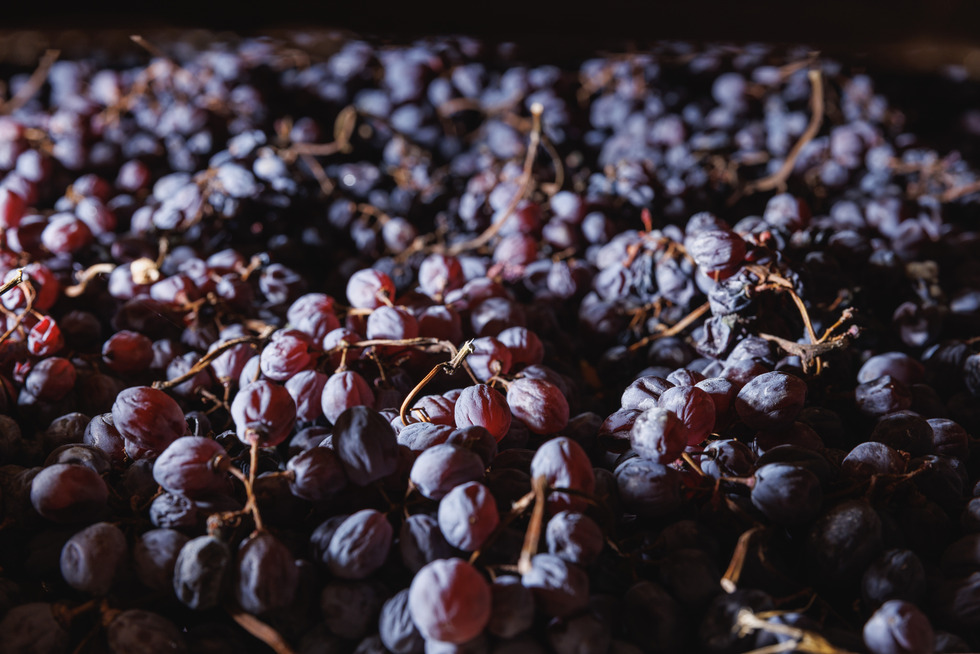
At the heart of Masi’s winemaking process lies the intricate art of appassimento, a traditional technique that is essential to the production of their renowned Amarone wines. Appassimento, or the drying of grapes, historically on bamboo racks, is a crucial step that sets Amarone apart from other red wines, imparting it with a unique depth of flavour and complexity.
As family member Giacomo Boscaini explains, the appassimento process at Masi is a carefully orchestrated dance between nature and technology. The winery’s state-of-the-art drying facilities are designed to mimic the perfect conditions for natural appassimento, allowing the grapes to slowly and gradually lose their moisture content over the course of several months.
The key to successful appassimento lies in the precise control of temperature, humidity, and airflow. Masi has developed a custom-built computer system, affectionately dubbed “NASA” (Natural Apacimiento, Super Assisted), that monitors and adjusts these critical parameters to ensure the grapes are dried to perfection.
“We have around 10 drying rooms where we dry the grapes,” Boscaini explains. “This one is the main drying room, and today it’s fully assisted by technology. We have a computer that matches the data of the best vintages from the last 20 years, and it optimises the conditions to create the perfect environment for natural appassimento.”
The grapes used in Amarone production – primarily Corvina, Rondinella, and Oseleta – are carefully selected and placed in the drying rooms, where they will remain for up to four months. During this time, the grapes lose a significant amount of their water content, concentrating the sugars, acids, and flavors.
“The computer matches the data of the best vintages from the last 20 years, and it optimises the conditions to create the perfect environment for natural appassimento,” Boscaini says. “If the outside conditions are not good, we create the same conditions inside the drying room to ensure the grapes are dried to perfection.”
This meticulous attention to detail is what sets Masi’s Amarone apart. By carefully controlling the appassimento process, the winery consistently produces wines that are rich, complex, and deeply expressive of the Valpolicella terroir.
“The appassimento process is hugely important,” Boscaini emphasizes. “It’s a long process, and you have to pay attention to a lot of different things to make sure everything is going properly. It’s much more complex than just pressing the grapes and putting the wine in the bottle.”
The dedication and innovation that Masi brings to the appassimento process are a testament to the family’s unwavering commitment to quality. By blending traditional techniques with cutting-edge technology, they have elevated the art of drying grapes to new heights, creating Amarone wines that are truly unique and captivating.
Tasting notes
Passo Blanco, Bianco di Argentina 2024 (Pinot Grigio and 40% Torrontés blend)
This wine has a bright, pale colour. On the nose, it offers an explosion of aromatic notes, with floral and citrus elements from the Torrontés blended with the more subtle, delicate aromas of Pinot Grigio. On the palate, it is light and refreshing, with a good balance of acidity and a hint of bitterness on the finish, reminiscent of almonds. This wine would pair well with light seafood dishes or raw fish.
Colbaraca, Soave Classico Superiore DOCCG 2023 (100% Garganica)
The nose on this wine is complex, with notes of oak, vanilla, and butter. The palate is smooth and soft initially but then develops a surprising salinity and minerality on the long, persistent finish. This wine has great depth and structure, likely due to the volcanic soils it is grown in. It would be an excellent match for dishes with buttery sauces or grilled fish.
Toar, Valpolicella Classico Superiore DOC 2020 (80% Corvina, 10% Rondinella, 10% Oseleta)
This Valpolicella has a deep, dark colour and an equally intense nose, with aromas of black cherry, black pepper, and a touch of earthiness. On the palate, it is full-bodied with high acidity, providing a lively, almost exuberant character. The flavours are concentrated, and the finish is long and structured. This wine would pair well with grilled or smoked meats.
MontePiazzo, Valpolicella Classico Superiore DOC 2020 (70% Corvina, 20% Rondinella, 10% Molinera)
This wine has a smooth, soft, and warm character on the palate, quite different from the previous Valpolicella. The nose is more subtle, with hints of dark fruit and spice. The mouthfeel is velvety, with a perception of sweetness despite being dry. This wine’s unique profile is likely due to the double fermentation technique used in its production, blending fresh and dried grapes.
Grandarella, Refrosco delle Venezie IGT 2018 (100% Refosco)
This wine has a very distinctive, almost unusual aroma, with notes of leather and a certain kick of exuberance. On the palate, it is full-bodied and intense, with a strong personality. The drying process, over 50 days, has transformed the Refosco grape, creating a unique and challenging wine that would pair well with robust, flavourful dishes.
Campolongo di Torbe, Amorone della Valpolicella Classico DOCG 2015
This wine offers a refined, approachable take on the iconic Amarone style. It delivers a subtle illusion of sweetness, balanced by the complexity of balsamic notes and refreshing mint or menthol aromas. The noble rot, developed during the appassimento process, adds a layer of depth, enhancing the wine’s rich fruit profile with earthy, savory undertones. Compared to its bigger sibling, Mazzano, Campolongo di Torbe is more elegant and easy-drinking, with a balanced structure that makes it versatile and accessible.
Mazzano, Amarone della Valpolicella Classico DOCG 2015
An imposing Amarone, deep ruby with burnished highlights. The nose is rich, with intense aromas of cherries in spirit and ripe plums. On the palate, it’s bold and majestic, offering layers of marasca cherries and blueberries, with a complex, lingering finish. The wine’s opulent structure and surprising length make it a perfect companion for hearty dishes like game, red meats, or aged cheeses. A testament to Masi’s mastery of the appassimento technique.

